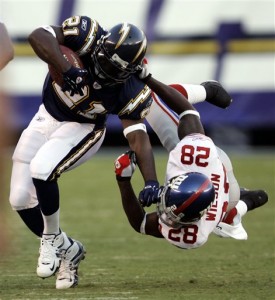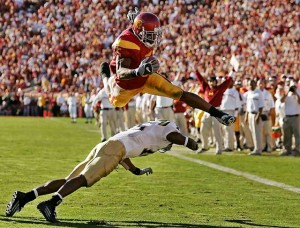Also referred to as a tailback (TB) or halfback (HB), the RB is an offensive player who typically lines up behind the quarterback (QB). He is recognized as one of the most glamorous positions on the field due to the integral threat of both the passing and running attacks. His responsibilities lie in exchanging the ball with the quarterback and having tremendous top end speed and the ability to burst through the hole and gain separation from defenders. In the passing game there is a dichotomy of blocking and receiving responsibilities. With the tremendous amount of influence on the offensive attack, the RB must have a superior blend of both quickness and agility as a runner, as well as sure hands and efficient vision down field as a receiver. Quarterbacks depend on the RB to block rushers to make it possible for passing plays to occur, also rely for short passes when the pocket collapses. Blocking not only occurs for the QB but also for other receivers once the ball has been caught downfield. Aside from the offensive aspect of play, RBs also participate in special teams kick return and punt return. This requires the player to catch a 70yard kick/punt and run it back as far as possible by avoiding as many players as possible.
Characteristics of A Running Back
There are 2 main categories of the Running Back position; smaller, more agile shiftier players or “Scat Backs” and bigger, stronger, run-you-over or “Power Backs”. Even though the main goal does not change between these two types of players, the way it is accomplished are completely different. The average NFL RB ranges from 5’6” – 6‘4” and 185lbs – 260lbs, therefore displaying the variety of abilities on the field.
Specific Required Movements/Skills of A Running Back
Agility/Vertical
Strength
Endurance
Balance


